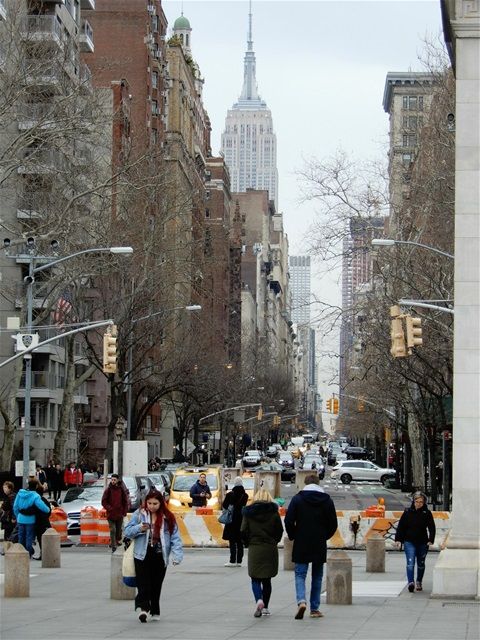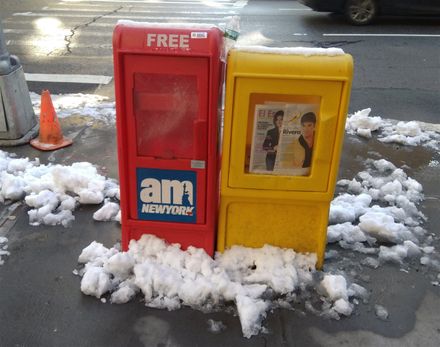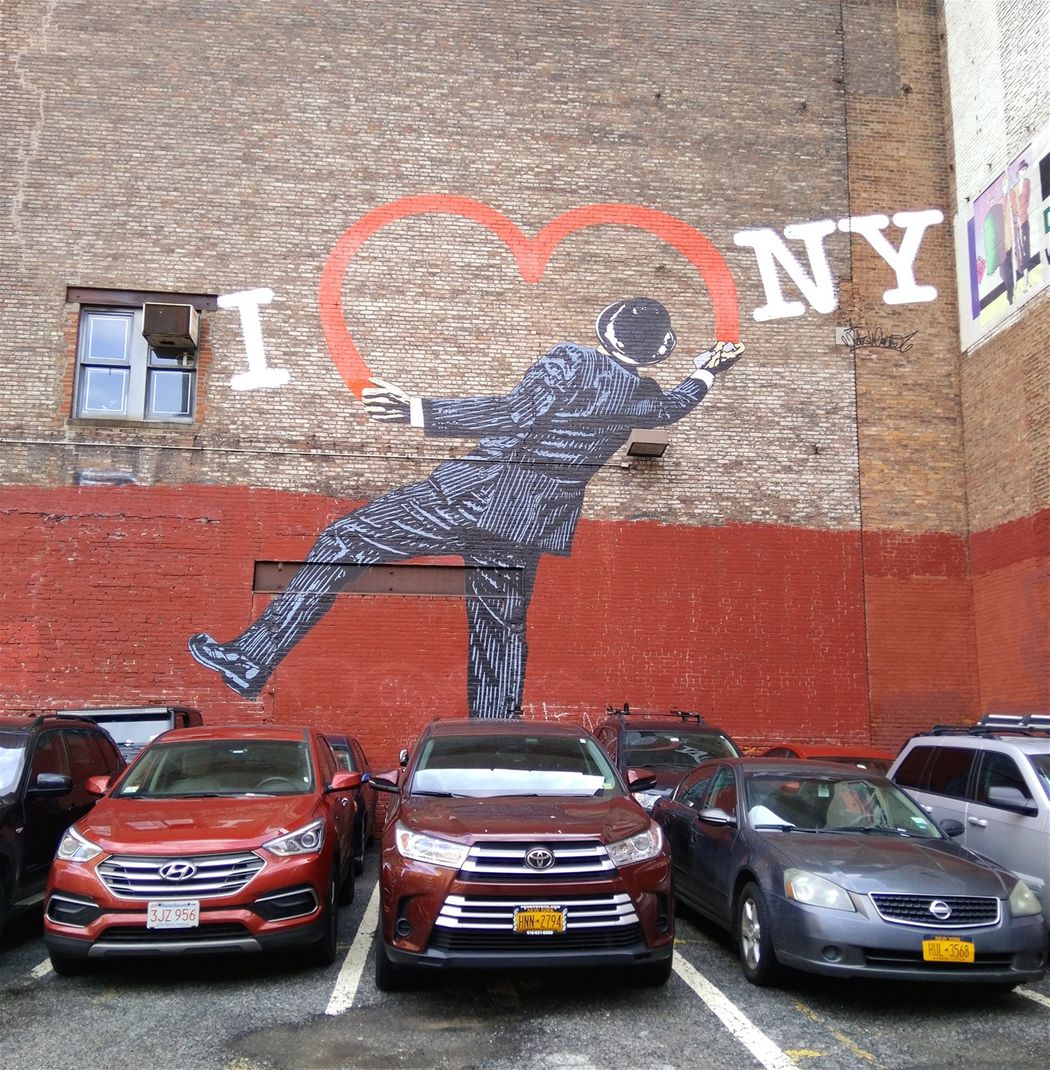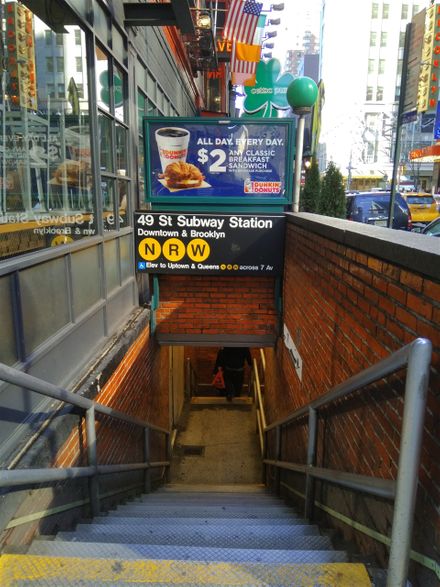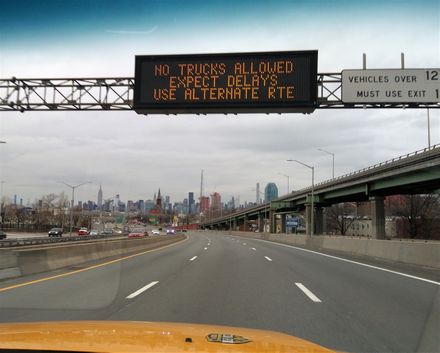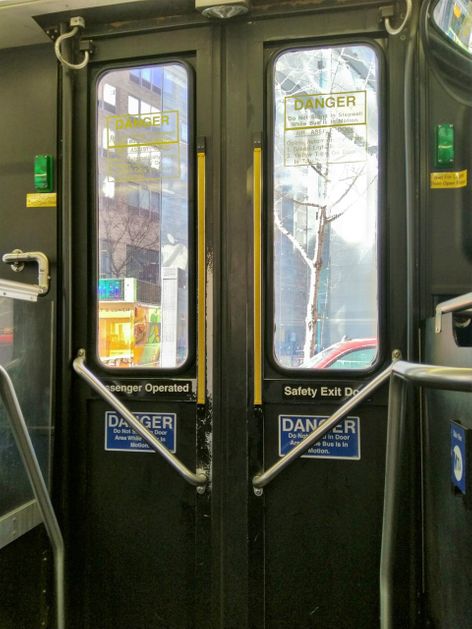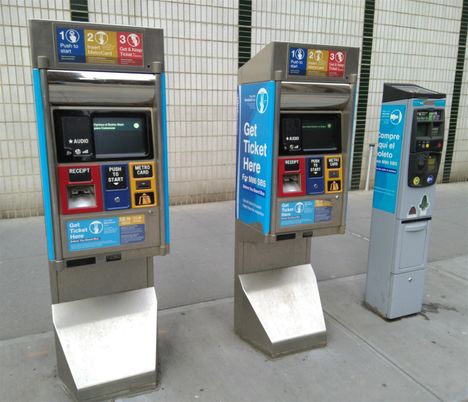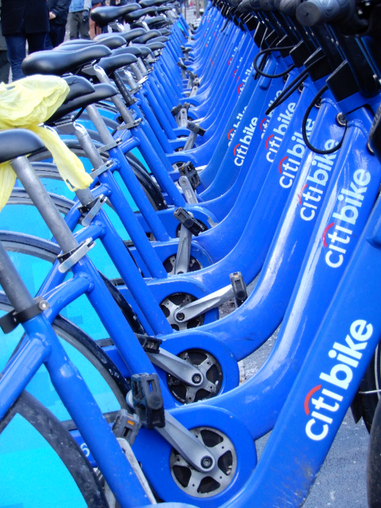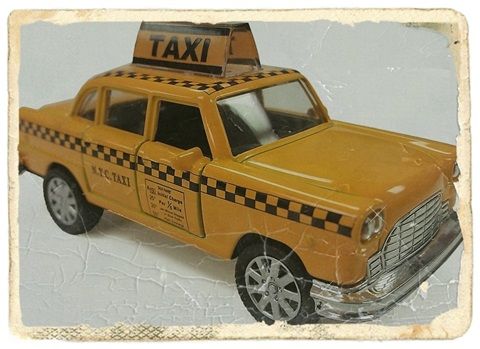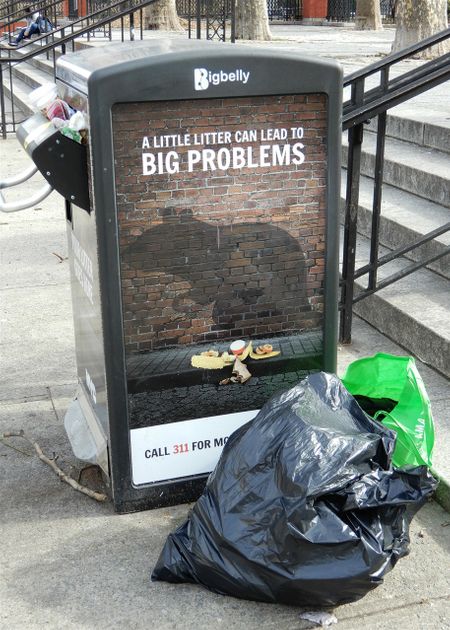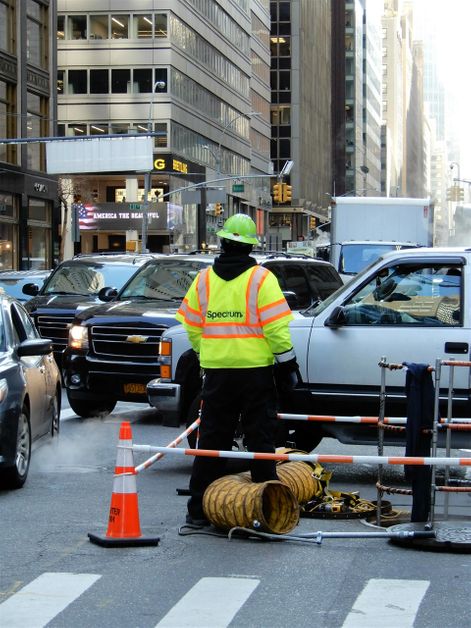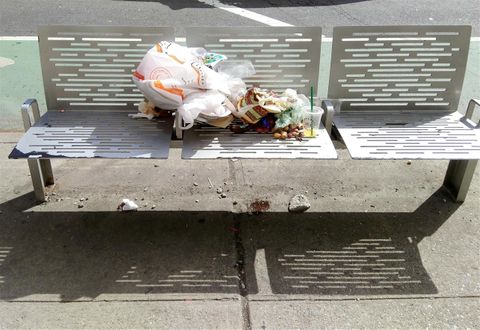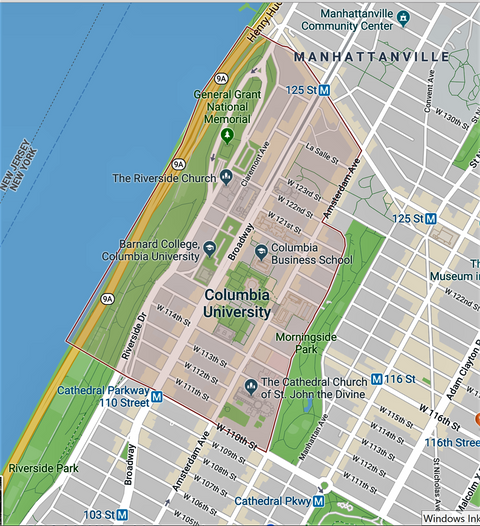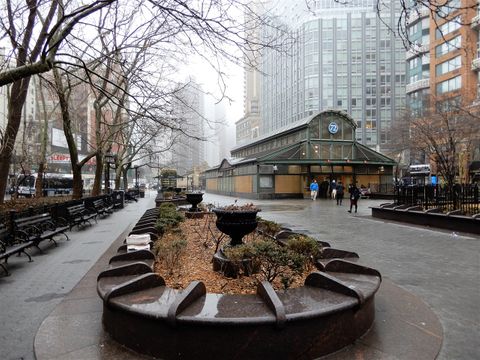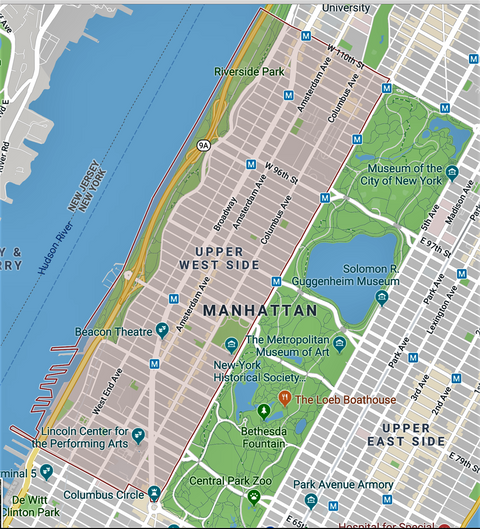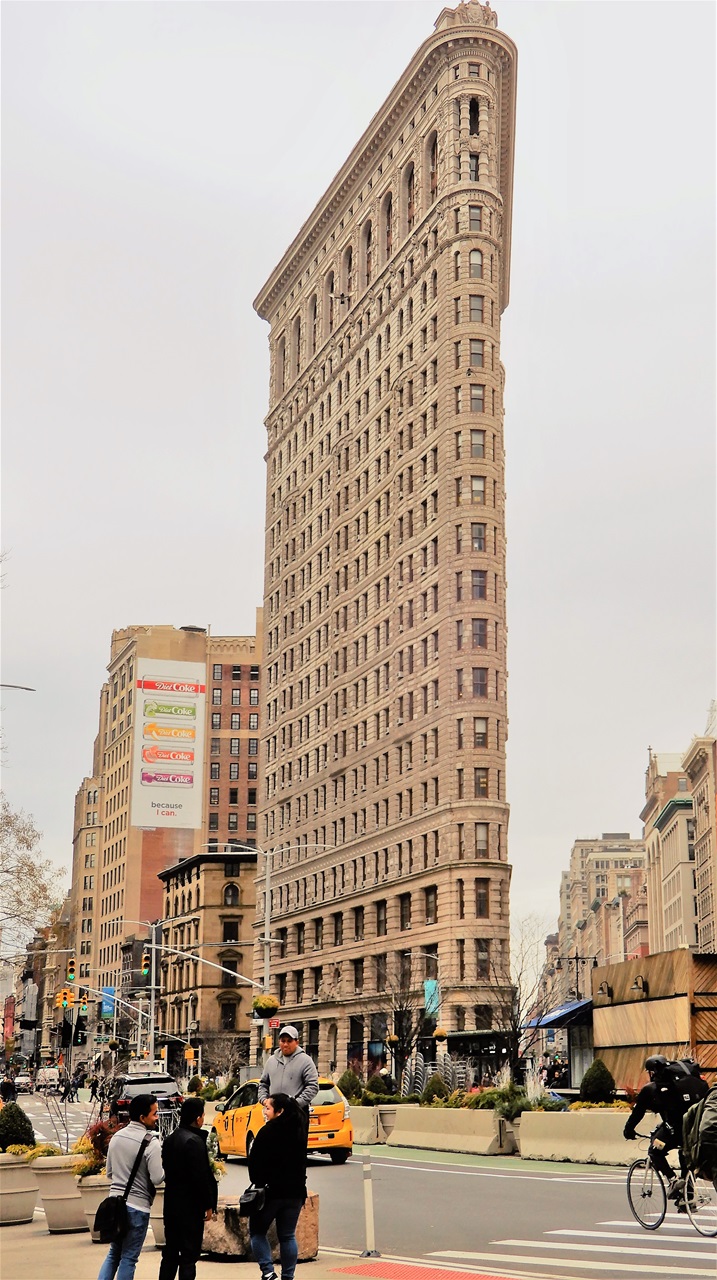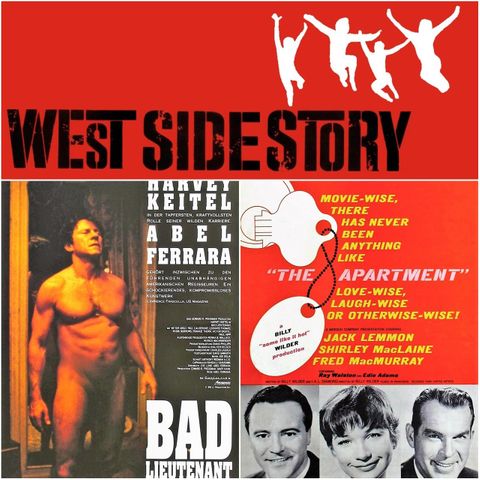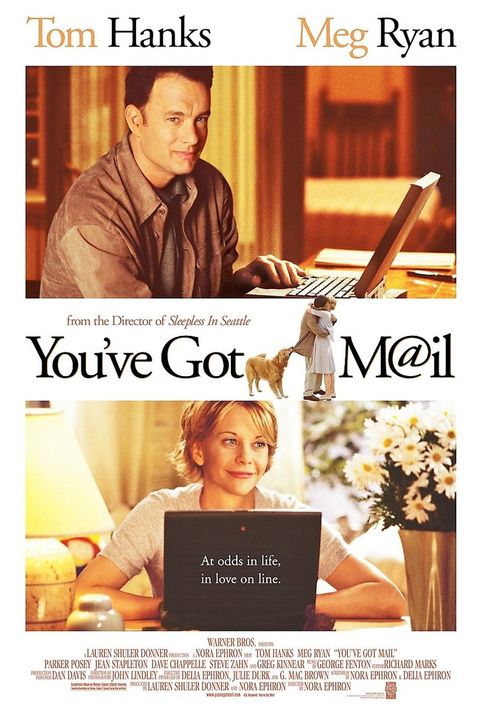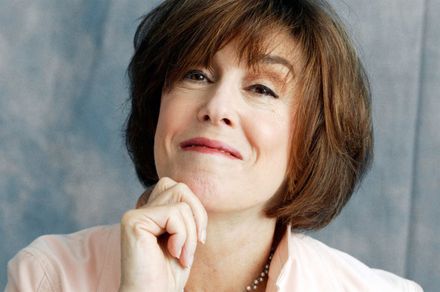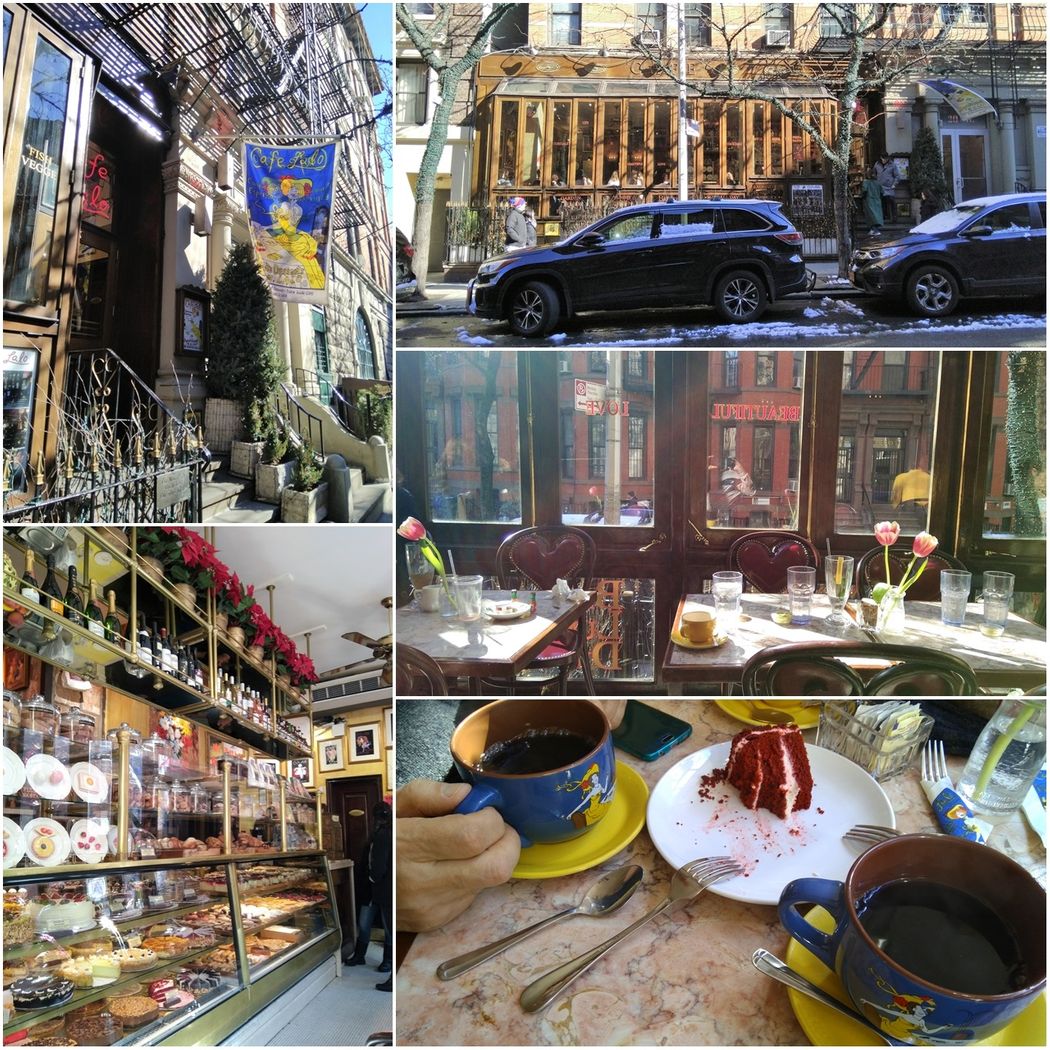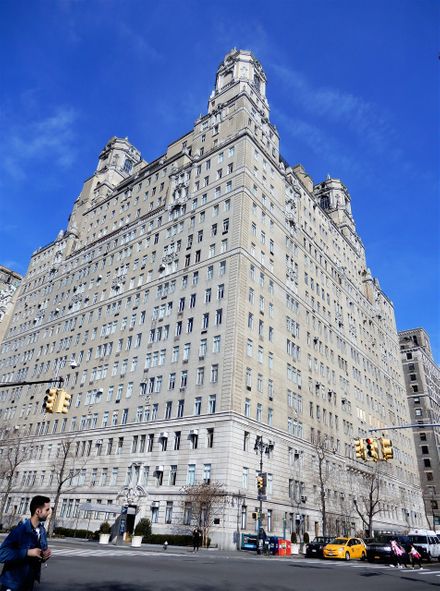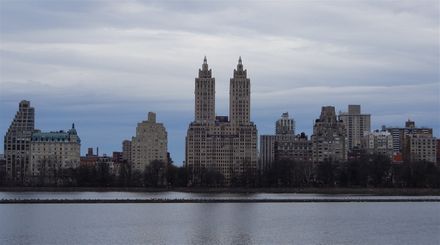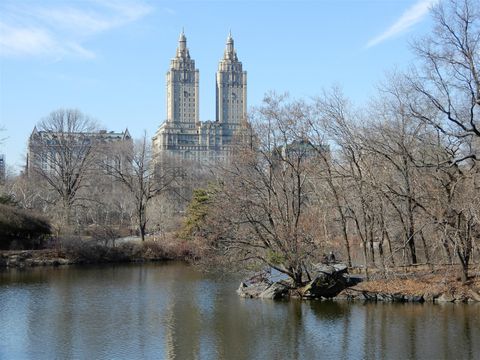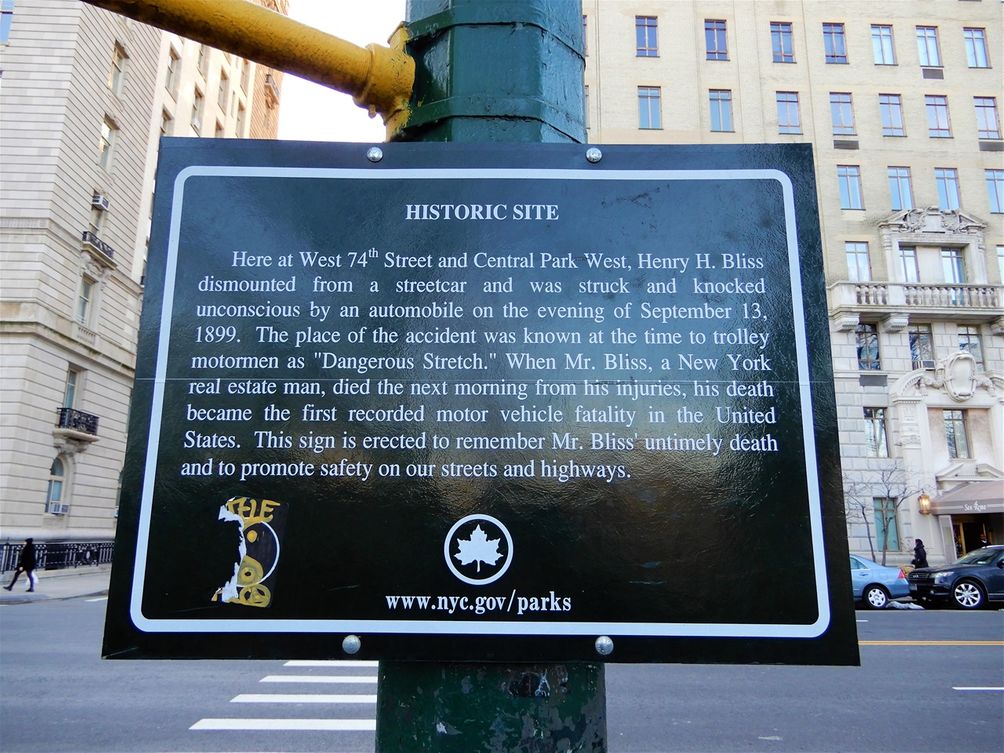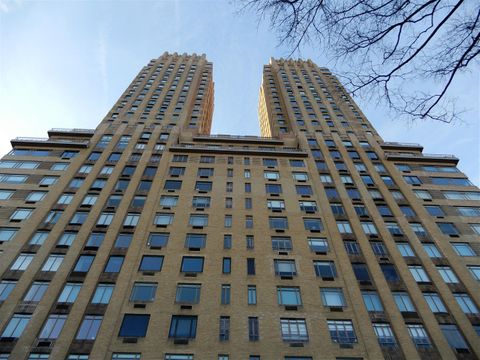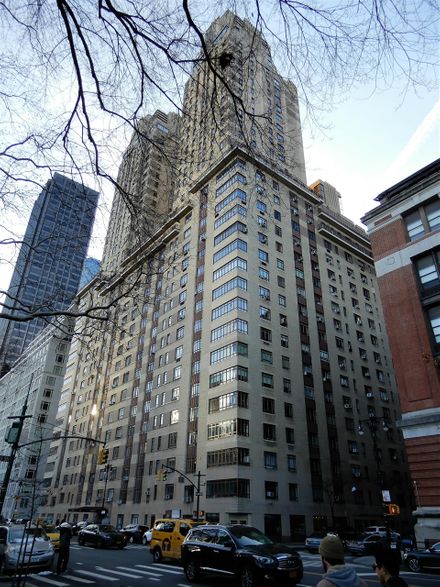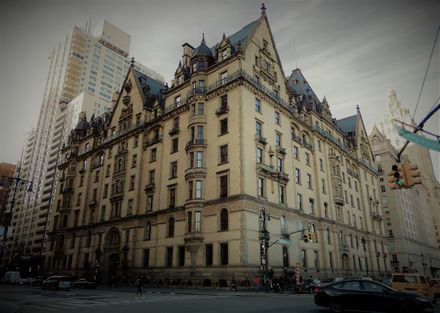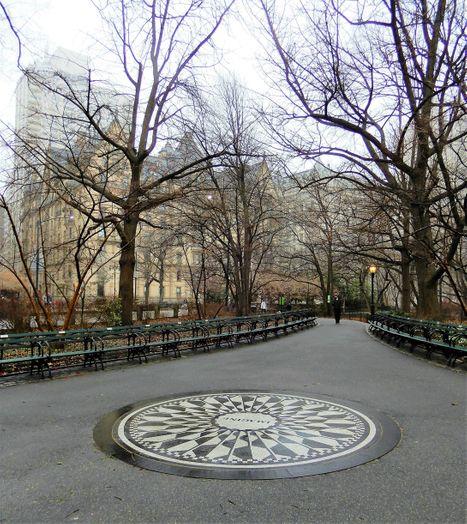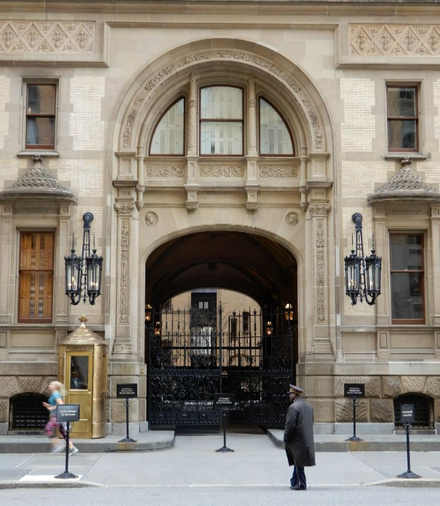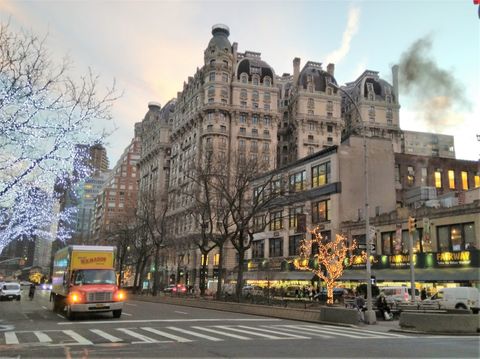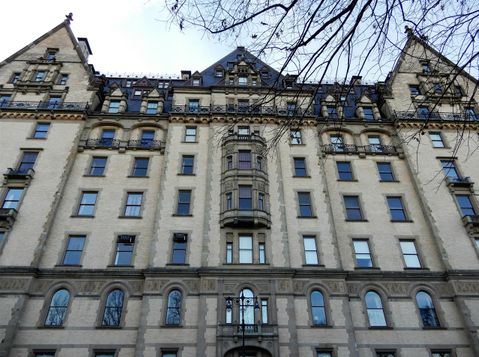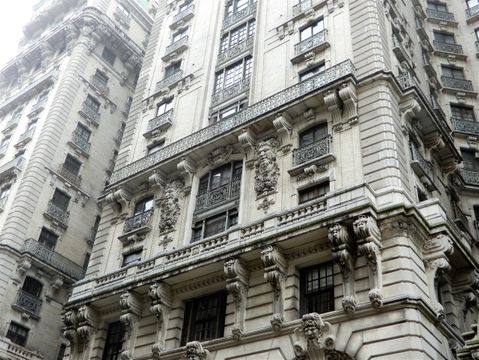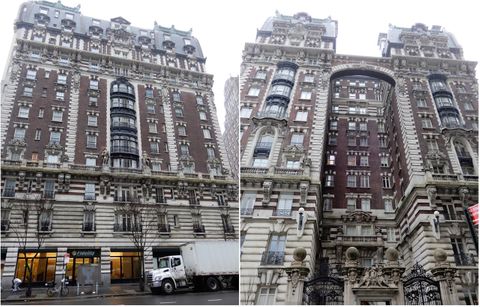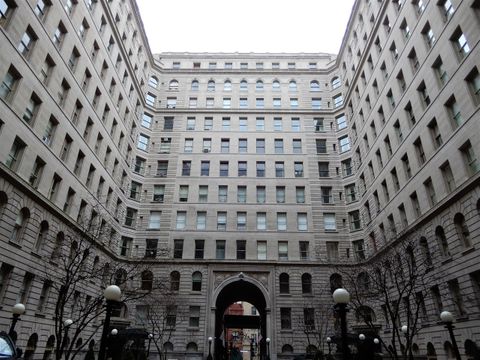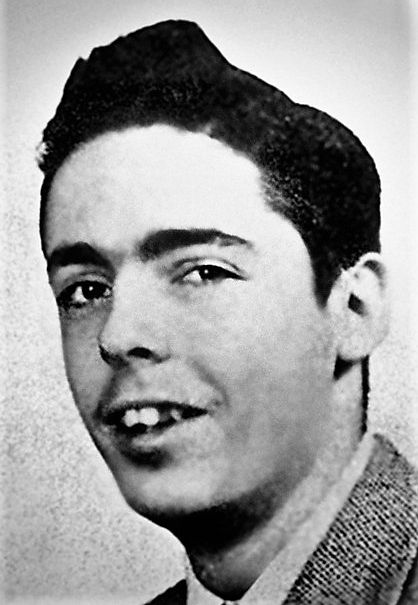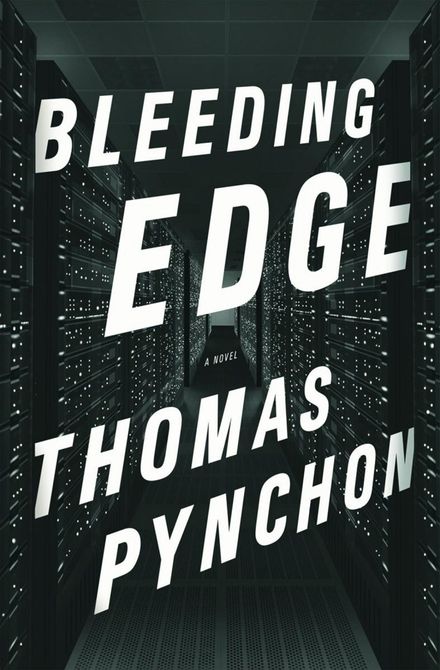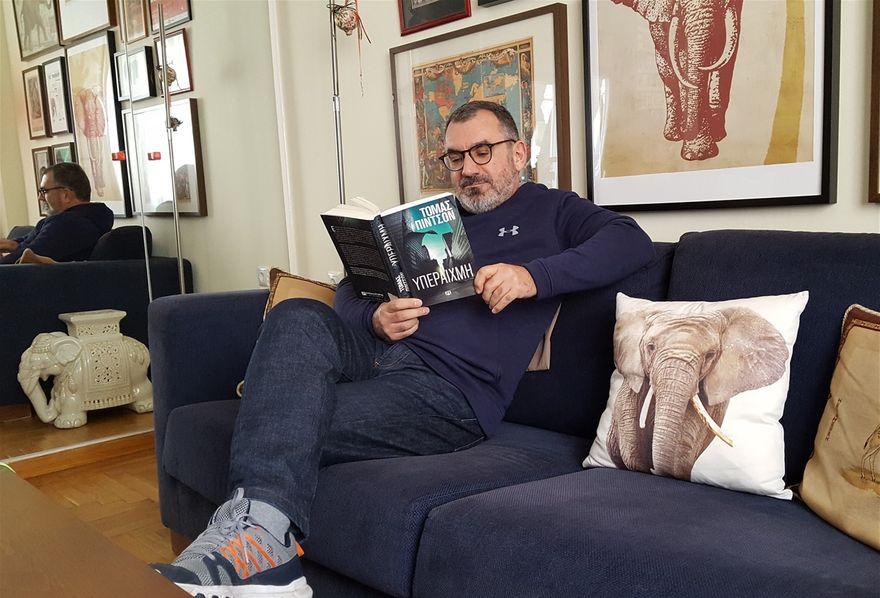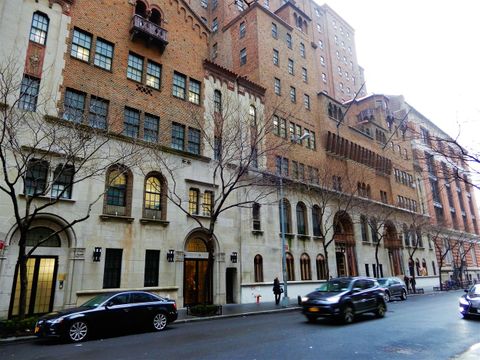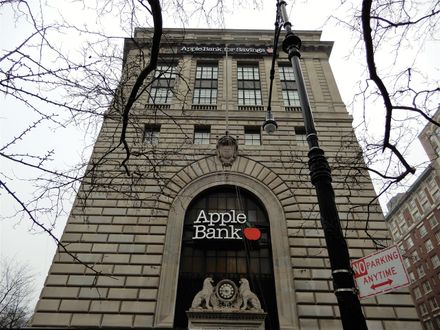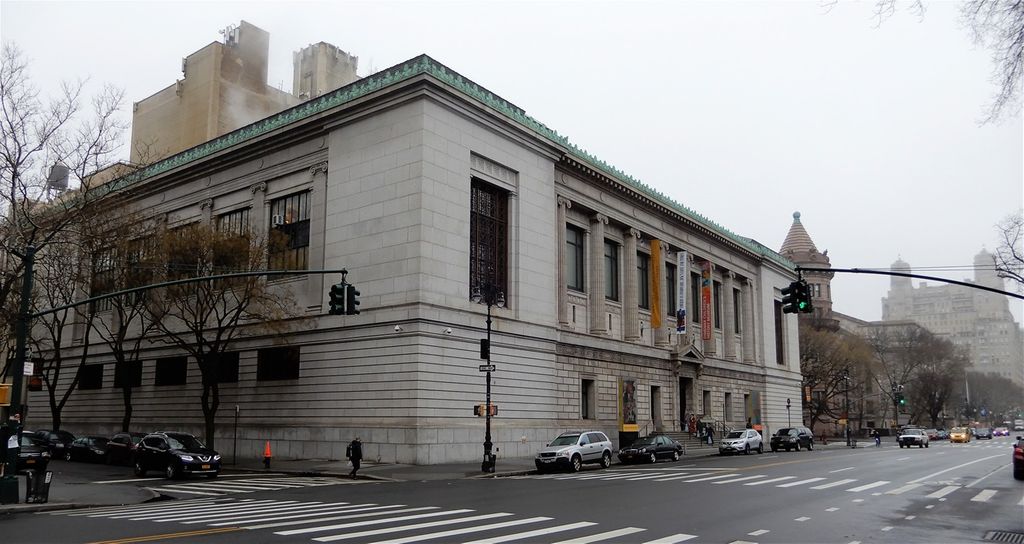Two weeks in Upper West Side, New York
(February 2018)
West Side Story
"If I can make it there, I'll make it anywhere".
Prelude
I visited New York City (and the United States) for the first time in 2001. That is rather late in my life, considering that by then I had already visited many countries, less exciting than the States.
However, for the next 7 years, after that first time, I have visited this legendary city many times: 4-5 times every year. The last time, though, I visited NYC was exactly ten years ago, in 2008. We rented a wonderful first floor apartment in a three-floor building in Chelsea and stayed there for almost a month. Needless to say, that those were some of my best holidays ever: lots of walking, lots of good food and countless soothing hours in sweet-smelling cafes.
So, it was about time to go back.
Therefore, one could say that I know New York quite well. Well, that could be true if NYC wasn’t an everchanging city with lots of hidden surprises waiting around the corner for you to discover.
Everything here is so familiar and at the same time so surprisingly new!
My plans for this visit were to concentrate on Upper West Side and not to spend valuable time to other parts of the city, which I have visited many times in the past and know relatively well. Of course, I made some trips outside UWS: I went to Chelsea to visit one of my favorite restaurants; I watched the New Lunar Year parade in Chinatown; I had my matcha snacks in Koreatown and my pastrami on rye in Lower East Side, I did my shopping in SOHO and Harlem, and I had lunch in posh Upper East Side.
February is not the best month to visit that part of the States and if you are unlucky you may encounter heavy snowfalls and chilly winds.
On the other hand, February is low season for the touristic industry and air fares can be ridiculously cheap and hotels have very good offers.
We were rather lucky during our visit, as there was nothing really extreme weatherwise: a mild snowstorm the first and the last day (!) of our stay, reasonable rainfall during a couple of days and high for the season temperatures up to 27 C for two days (!).
The first day NYC welcomed us with snow. But, that was brief and next morning nothing indicated what happened.
Sure I do love NYC.
Arriving in JFK
We arrived at Terminal 1 of JFK airport on a Lufthansa Boeing 747. After hours of waiting to take our luggage and to go thru immigration, we took a taxi. The taxis have a flat rate of 52$ to any destination in Manhattan, which means around 70-80$ in total, after adding taxes, tolls and tip. Most taxis accept credit cards.
Moving around in NYC
Entrance to a metro station at Midtown.
The buses are cleaner, on time (that's questionable), efficient and compliment the subway by moving not only in north-south directions, but also in east-west directions (crosstown). Personally, when in NYC, I prefer to travel on the buses. They may be much slower than the metro, but you can enjoy the view _when the windows are not so dirty and you can see outside.
All together the transport system is very well-organized and easy to use. As I have mentioned for other destinations, electronic maps and transportation applications (e.g. Moovit) for telephone help a lot to move around in the city, in the most efficient and hassle-free way.
Buy a MetroCard at one of the ticket machines at any of the stations, or from a station agent at a ticket booth. The machines accept both credit cards and cash, but sometimes the credit card machine doesn’t work, so be prepared to have some cash on you.
If you’re only going to use the subway once, purchase a $3 single-ride ticket from the machine only. But, if you are taking multiple rides, buy a pay-per-ride card that allows you to put a specific amount of money on it and get some discount per ride. You just need to put $5.50 or more on before using it.
On our way to Manhattan from JFK.
The Metropolitan Transportation Authority (MTA) is responsible for public transportation in New York State. It provides local and express buses, subway, and regional rail service in Greater New York.
Most tourists do not get out of Manhattan as they do not spend in NYC more than 4-5 days. The easiest way to move around in Manhattan is the subway which moves in North-South directions (uptown-downtown).
The NYC metro is cheap and reliable (most of the time), but alas, a filthy “scary” place. There are very few elevators (as the stations are very old and haven’t been renovated for ages) and the worse is that these very few ones smell urine ...just keep your breath and soon you'll be at the surface. The carriages are old, noisy and dirty, while the stations have more rats than passengers.
To get off the bus, wait till the green lights go on and push the yellow bars open.
MTA MetroCard.
If you plan to stay for a week you should buy the 7-day unlimited travel metrocard which costs $32. This is the best option, even if you stay for less days (4 or more), as it is the more convenient (hop on/off with no worries) and economic way. You just swipe the MetroCard as you enter thru the metro gates or put it in the dedicated slot as you enter the bus (front door only). You do not need to do anything as you exit either the metro gates or the bus.
The Select Bus Service (SBS) network introduced in NYC in 2017 and provides a complementary service to the subway system by connecting neighborhoods to subway stations and major destinations. To improve reliability, swiftness and service along these high ridership corridors a combination of tools has been implemented: off-board fare payment, bus lanes, traffic signal priority, and longer spacing between stops.
Ticket machines at a SBS bus stop.
I used several times this service: the buses are new and more comfortable (they are long vehicles). Just do not forget to get your ticket at the bus stop before boarding the bus: The SBS bus stops have machines where you’ll put in your prepaid MetroCard in order to get a paper ticket to take onto the bus before boarding.
You can also pay by coins, but be prepared to have exact change on you. You don’t need to swipe the ticket when you board the bus, just keep it handy in case you get checked by an agent, which allows you to board the bus through any of the doors.
Citi Bike is New York City’s bike share system. It launched in May 2013 and has become an essential part of the transportation network. It's fun, efficient and affordable – not to mention healthy and good for the environment.
Citi Bike, like other bike share systems, consists of a fleet of (12.000) specially designed, sturdy and durable bikes that are locked into a network of (750) docking stations throughout the city. The bikes can be unlocked from one station and returned to any other station in the system, making them ideal for one-way trips. People use bike share to commute to work or school, run errands, get to appointments or social engagements, and more.
Citi Bike.
If you don’t feel like taking public transportation or cannot hop on a bike because you have luggage or shopping bags to carry, or you just don’t feel like dealing with other people, hail a yellow taxi or download theNYC taxi app for a ride.
Taxi rides are not as expensive as you may think, especially if you are splitting the fare between a few people.
When in doubt, walk. NYCis an easy city to walk aboutand distances are not that long as you may think. If the weather is reasonable and you are not on high heels, then walk. Nothing compares to seeing the city on foot: you’ll find interesting spots that you may not see while whizzing by on a bike, or crawling through traffic on a bus or taxi.
30 things I hate about NYC
👎Addresses written as "940 Madison" instead of the cross streets. Thanks God there is google maps to find what you are looking for!
👎No seats in coffee shops…ever. You strangle to find a seat to sit down and enjoy your coffee. It is supposed that New Yorkers grab their coffee paper cup and off they go. Bullshit! They are desperate to sit down and enjoy their coffee, but there are those computer nerds who spend all their day sitting there and use the free Wi-Fi. A friend told me that I should not be angry with them, because "they are just lonely people"… of course they are lonely, and they'll remain lonely for the rest of their life as they talk only to their computer screen!
👎Construction and scaffolding every day, everywhere.
👎Stairs, for everything. It seems that New Yorkers have not discovered elevators yet. Really? What about that mister Otis? He was New Yorker….no?
👎Not getting telephone service in the subway. It is the 2018 stupid!
👎Everyone having a dog. There is excrement everywhere. And I thought Athens is the "poo city"!
👎People talking loudly in a very irritating and pretentious way...especially the ladies. But again, don't all Americans do that?
Construction, works, scaffolding everywhere.
👎Having mixed feelings about the Central Park horses: the poor animals suffer under the intense summer heat and under the chilly winter rain… but, it is so romantic to go on a cart ride in Central Park and feel that something!
👎Walking everywhere but still never feeling like you got a workout in.
👎Your favorite coffee shop, bar, or restaurant closing because of rent.
👎Always being by trash.
👎Train delays. Bus delays.
👎Income inequalities.
👎Lines for everything.
👎Rats looking at you in the subway... or just ignoring you eating pizza.
👎Card minimums and cash-only places. Hey, this is 2018!
👎Tourists, lots of tourists everywhere. Aint't I a tourist myself?
👎The noise...the noise...the noise.
👎The firetruck sirens... but, not the firemen!
👎Trump's eminent presence with all those Trump Towers.
👎Assuming any cocktail on a menu for under $13 must be a typo.
👎NY getting 15 times as much snow as the South Pole.
👎Realizing just how dirty the subway is. Some 15,152 types of life forms, from insects to bacteria, have been identified on the NYC subway.
👎Having many homeless people, when there are four times as many abandoned houses as there are homeless people in NYC.
👎Having just realised that the average cost of a night out in NYC is more than $80.
Litter everywhere... literally everywhere.
👎Getting excited when you can find a gallon of milk for less than 5$.
👎Having to pull up Google Maps every time you get into a taxi.
👎Tipping while using a card. Someone has to tell them that there are simpler, more practical and less confusing ways to tip!
👎Having to deal with rude bus drivers, who used to be very polite ten years ago! But, again what I am talking about? I live in Athens where bus drivers most of the time ingnore you waiting at the bus stop and continue their way.
👎Having to go through security checks every time you enter a public place.
UPPER WEST SIDE
Orientation, Upper West Side & Morningside Heights
The Upper West Side—bracketed by Central Park and Riverside Park, and distinguished by noble, two-towered apartment buildings along Central Park West—is a place where you can frequently see families pushing strollers, walking dogs and, on weekends, settling in for brunch at mainstays like Sarabeth's. Moreover, it is here where the word and philosophy around “brunch” was born.
Of course, it's not all residential. There's culture, in the form of the American Museum of Natural History, the Beacon Theatre and Lincoln Center for the Performing Arts. And plenty of shopping, eating and nightlife as well.
The Upper West Side extends from 59th to 110th Streets, though most of the sights are below 96th Street.
Morningside Heights on the map.
Subway lines 1, 2 or 3 folow Broadway Ave and A, B, C or D trains run along Central Park West. Buses M96, M86 and M79 cross the area from west to east through Central Park and to the Upper East Side.
The most famous street in America, Broadway Avenue, runs through the whole area from north to south. Broadway is the only street that confounded even Randel, the creator of the famous NYC grid. Its survival is responsible for the creation of many triangular open spaces like the Verdi Square & the Straus Park in Upper West Side, the Times Square & Union Square downtown, and furthermore, it is responsible for Manhattan's most distinctive triangular building: the Flatiron Building.
Broadway avenue, follows a path forged a thousand years ago by the Lenape Indians. A trail starting from the camps in the island’s northwest to the southern shore. All for one life-sustaining purpose: oysters. New York harbor once boasted half the oysters in the entire world. Some of the largest beds were found on a small island off the tip of Manhattan, known as Oyster Island. For hundreds of years, oysters were a primary source of food for native Americans and settlers alike. Broadway's unconventional path is testament to that history. Oyster island got a new name later: Ellis island.
Verdi Square, the 72nd street hub.
Upper West Side on the map.
Many consider Upper West Side to be indistinguishable from Morningside Heights, just to the north of it.
Morningside Heights is extended from the 110th street to the 125th street and it is bracketed by Riverside Park and Morningside Park.
Columbia University is the true heart and the brains of the area and thanks to it, Morningside Heights is un upscale neighborhood.
Manhattan's most distinctive triangular building: the Flatiron Building.
Broadway avenue, follows a path forged a thousand years ago by the Lenape Indians. A trail starting from the camps in the island’s northwest to the southern shore. All for one life-sustaining purpose: oysters. New York harbor once boasted half the oysters in the entire world. Some of the largest beds were found on a small island off the tip of Manhattan, known as Oyster Island. For hundreds of years, oysters were a primary source of food for native Americans and settlers alike. Broadway's unconventional path is testament to that history. Oyster island got a new name later: Ellis island.
Upper West Side in the movies
I picked a hotel in Upper West Side and I was thrilled to stay there. If you've seen a leafy, residential Manhattan neighborhood depicted on TV or in the movies, there's a decent chance it was the Upper West Side.
It's where Jerry made his home on “Seinfeld” and where Liz Lemon lived on “30 Rock”. Chuck Bass owned a hotel there on “Gossip Girl”. In “The Apartment”, “Bud" Baxter (Jack Lemmon) is coerced into lending his Upper West Side place to his managers, who use it to cheat on their wives. “West Side Story” and Bernstein’s music introduce us to the neighborhood (called then San Jose Hills), as it was in late 50s, deprived of the glamour of today. Tom Cruse’s car crashes at riverside drive in “Vanilla Sky” and the highly corrupt “Bad Lieutenant” Harvey Keitel wonders around the city trying to solve the case of a raped nun in an earnest story of Catholicism and forgiveness.
Famous films shot in Upper West Side.
Numerous movie characters have had lunch and dinner in one of the many restaurants, delis and cafés and many others had their apartment in the area.
Some films feature unique buildings that display a distinct architectural style and add an important element to the film’s atmosphere. From the Dakota’s mysterious energy in “Rosemary’s Baby” to the iconic rooftop of 55 Central Park West in “Ghostbusters”, the Upper West Side buildings featured in movies are central characters to the films in which they appear.
“You've Got Mail” poster.
“You've Got Mail”
Yet, what makes Upper West Side the neighborhood we all dream is that here Kathleen (Meg Ryan) and Frank (Tom Hanks) lived and fell in love in “You've Got Mail”, one of my favorite movies of all time _not because of the silly-sweet plot_, but because Upper West Side holds one of the leading roles besides Meg, Tom and Brinkley the Dog. It feels “You've Got Mail” summed up what we love about the neighborhood's vibe.
The film takes place in the 90's, a time when everything changes and globalization "threatens" the laid-back West Side way of life.
Note: After coming back from this trip to NYC, I watched the film again. Yes, the 90's brought many changes in our life (alas, disturbing most of them), which has worsened our lives worldwide, but one is for sure: Upper West Side has not changed that much. Maybe big chains like “Barnes & Noble”, have established themselves in the neighborhood (the infamous “Fox Bookshops” of the film?) and they may have forced smaller ones like “Shakespeare and co” (which has been as much as a staple of the Upper West Side as Zabar's) to close down, but people still eat and drink their coffee at the same delis and cafes, walk in the beautiful leafy streets and jogging early in the morning or walk their dog in Morningside park.
Nora Ephron (the director and screen writer of the film) moved in the area in the 80s and loved it! Read the story of her moving into the legentary "Anthorp Apartments", in The New Yorker article:
“In February, 1980, two months after the birth of my second child and the simultaneous end of my marriage, I fell madly in love. I was looking for a place to live, and one afternoon I walked just ten steps into an apartment on the Upper West Side of Manhattan and my heart stood still. This was it. At first sight. Eureka. Ten steps in and I said, “I’ll take it.”
Nora Ephron (1941-2012)
We all remember Kathleen waiting for Frank in "Cafe Lalo" for their blind date. The place is always packed with tourists and film's fans. It has a great selection, though, of cakes and light food. Try the red velvet cake!
Architectural Landmarks
Central Park West.
The Beresford, just opposite to the American Museum of Natural History.
Architecture buffs will want to take their time exploring the neighborhood.
The Upper West Side/Central Park West Historic District is distinguished by four luxury co-ops built during the 1930s—The Eldorado, San Remo, Majestic and Century Apartments—each of which has two towers on its interior. The design is a quirk of a 1929 building regulation that limited the height of street-facing residential constructions.
Other prominent and historic apartment complexes on the Central Park West include the Dakota and the Beresford.
Eldorado Apartments
The spectacular art deco Eldorado Apartments is the northernmost of the four twin-towered luxury housing cooperatives. It fills the complete blockfront extending between W90th and W91st Streets, and overlooks the Jacqueline Kennedy Onassis Reservoir in Central Park.
The Eldorado was constructed in 1929–1931 to the design of Emery Roth, and has 30 floors. Of the two tower "tops", only the southernmost is habitable, while the other houses a water tank _but, the floors beneath are habitable.
The Eldorado Apartments seen from the Jacqueline Kennedy Onassis Reservoir in Central Park.
The building has been occupied by many famous residents, among them Alec Baldwin, Faye Dunaway, Moby, Michael J. Fox and the author Sinclair Lewis. The building was also the fictional address of Marjorie Morningstar, the heroine of Herman Wouk's 1955 novel.
San Remo apartments
The San Remo seen from the Central Park.
The San Remo is a luxury, 27-floor, co-operative apartment opened in 1930.
At the 18th floor, the building splits into the San Remo's iconic 10-floor towers, the top of which were inspired by the drum of the Choragic Monument of Lysicrates in Athens, Greece, and culminating in Renaissance-style Corinthian temples crowned by 22-foot-high copper lanterns. The twin tower design was innovative when first developed, and inspired a number of imitators over the years (including The Majestic, The Century, The Eldorado and—most recently—the Time Warner Center).
Some of the famous residents of San Remo were: James Levine, Barry Manilow, Stephen Sondheim, Steven Spielberg, Donna Karan, Tony Randall, Demi Moore, Glenn Close, Dustin Hoffman, Steve Martin, Bruce Willis, Jennifer Rush, Marshall Brickman, Dodi Fayed, Aaron Spelling, and Diane Keaton. Rita Hayworth spent her last years there, in a unit beside that of her daughter, Princess Yasmin Aga Khan. Steve Jobs bought and renovated a penthouse apartment but never lived in it, ultimately selling it to Bono. In 1985, Madonna applied to buy an apartment in the building but was infamously rejected by the residents’ board! On December 23, 2013, philanthropist Robert Wilson committed suicide by jumping from his 16th floor apartment in the South Tower.
The sign displayed at the intersection of 74th street and Central Park West (between San Remo and the Langham) commemorates the first ever recorded car accident.
The Majestic apartments
The Majestic (or Majestic Apartments) is a twin-towered 29-floor housing cooperative skyscraper which constructed in 1930–1931 and designed in the Art Deco style by architect Irwin S. Chanin. The building was originally planned to be a 45-story hotel, but the plans were changed midway through construction due to the Great Depression and the passing of the Multiple Dwelling Act, which restricted a building's height immediately above the street, but allowed tall towers if the property was sufficiently large.
The Majestic replaced the Hotel Majestic, designed by Alfred Zucker in 1894 at the same site, which had been home to Gustav Mahler and Edna Ferber, among others.
The Majestic Apartments.
Among the notable residents, the Majestic was home to some of the former heads of the Luciano crime family (later called the Genovese crime family) including Lucky Luciano, Frank Costello, and Meyer Lansky. In 1957, Vincent "The Chin" Gigante shot Frank Costello in the lobby of the Majestic in a failed assassination attempt. Louis "Lepke" Buchalter, a founding member of the New York syndicate, along with Meyer Lansky and Lucky Luciano, and head of its security arm, Murder, Inc., lived in an apartment there in 1933.
The Century apartments
The Century Apartments.
The Dakota Apartments
The Dakota Apartments.
The Century apartments building is located on the site of the Century Theatre. The theatre was demolished in 1930–31 to make way for the apartments which kept the name of the former theatre. The Century, along with its one-year older sister building, The Majestic, was among the first residential buildings to use what had been predominantly an office building style of architecture. Both The Century and The Majestic stand 30-stories and their Art Deco motifs stand in contrast to the Beaux-Arts buildings that surround them.
The Century features art deco "machine-inspired" towers and cantilevered floor slabs. The floor slabs prevent the necessity of corner columns thus allowing the building to be fitted with large corner windows.
The Dakota Apartments on the Central Park West avenue is located between the Langham and the Majestic. It was built in 1884 and is considered to be one of Manhattan's most prestigious and exclusive cooperative residential buildings; most probably the most famous and notorious building in NYC. It took its name from the state of Dakota, even though historians do not agree on the exact reason this happened. High above the 72nd Street entrance, the face of a Dakota Indian keeps watch.
In Central Park, just opposite the Dakota, stand Strawberry Fields, a living memorial to the world-famous singer, songwriter, and social activist John Lennon.
Landscape architect Bruce Kelly designed a meditative Garden of Peace, rich in trees, shrubs and flowers, which was integrated with the historic landscape of Frederick Law Olmsted and Calvert Vaux. At the western apex of the garden, Neopolitan artisans crafted a circular black and white mosaic emblem into the pavement, containing a starburst pattern and the solitary word, “Imagine”, the title of one of Lennon’s most famous songs. 150 nations were enlisted to contribute plants to the garden, thus embodying the principle of world peace for which Lennon was such an influential advocate. On October 9, 1985, on the 45th anniversary of Lennon’s birth, Strawberry Fields was dedicated, and has become a pilgrimage site for visitors to NY from around the world.
Strawberry Fields in Central Park. Dakota can be seen in the background.
The building's high gables and deep roofs with a profusion of dormers, terracotta spandrels and panels, niches, balconies, and balustrades give it a German Renaissance character, an echo of a Hanseatic town hall. Nevertheless, its layout and floor plan betray a strong influence of French architectural trends in housing design that had become known in NY in the 1870s.
The Dakota is a square building, built around a central courtyard. The arched main entrance is a porte-cochère large enough for the horse-drawn carriages that once entered and allowed passengers to disembark sheltered from the weather. Many of these carriages were housed in a multi-story stable building built in two sections, 1891–94, at the southwest corner of 77th Street and Amsterdam Avenue, where elevators lifted them to the upper floors. The "Dakota Stables" building was in operation as a garage until February 2007, when it was slated to be transformed by the Related Companies into a condominium residence.
Dakota is the building that has been associated with John Lennon’s assassination, who used to live here with Yoko Ono.
The killing took place at the south entrance of the building. It is prominently featured in Andrew Piddington's 2006 film "The Killing of John Lennon".
Yoko Ono still lives here.
Dakota is the building that has connected its history with the glamour of showbiz, as the celebraties lived or still live here are countless.
The building was reportedly fully rented before it even opened, thanks to a glowing New York Times review. The Steinway family, of Steinway piano fame, was one of The Dakota's first residents. Though he died in 1883, Peter Tchaikovsky is said to have lived there (perhaps he lived in it before its completion). Actress Lauren Bacall owned a nine-room apartment for 53 years that recently sold for $23.5 million. Here's just some of the other showbiz people who lived in the Dakota: Leonard Bernstein (his former apartment was the building's most expensive sale), Rosemary Clooney, Judy Garland, Roberta Flack, Boris Karloff, Rudolf Nureyev and Jason Roberts.
The south entrance of Dakota, where John Lennon was shot.
The Big Five on Broadway
The Ansonia.
The Dakota facade.
Although historically home to many creative or artistic people, in 2005, the building and its co-op board of directors rejected the pass of one of the apartments to actors Melanie Griffith and Antonio Banderas.
In Roman Polanski's 1968 film "Rosemary's Baby", the Dakota was used for exterior shots of "The Bramford", the apartment building where several of the characters live. This probably was not an arbitrary location choice, as stories of ghost sightings have loomed around the building for years. In fact, when John Lennon was alive, he told Ono he saw a 'crying lady ghost' roaming the halls. Later Ono herself saw her husband's ghost sitting at his white piano: he told her, "Don't be afraid. I am still with you [sic]".
The Ansonia, the Apthorp, the Astor Court, the Dorilton and the Belnord Apartments on Broadway, are the "big five" apartment buildings in the heart of Upper West End.
"The Ansonia"
When The Ansonia finished in 1904, it was the largest residential hotel of its day. Legend has it that the owner (William Earl Dodge Stokes) wanted The Ansonia to be much taller but stopped at the 17th floor because he liked the view.
The Ansonia had every luxury of the period, including a pneumatic tube system that allowed tenants to exchange messages and gossip; Turkish baths; six passenger elevators, as well as large service elevators and dumbwaiters for delivery to apartment kitchens; several restaurants decorated in the Gilded-Age style of Louis XIV; two swimming pools, including the world's largest indoor pool; basement shops; fresh eggs, courtesy of the chickens in Mr. Stokes' rooftop farm; and seals that frolicked in its lobby fountain.
Some of its most famous residents included musical immortals Enrico Caruso, Sergei Rachmaninoff, Igor Stravinsky, Arturo Toscanini, Gustave Mahler and Yehudi Menuhin; theatrical notables Florenz Ziegfeld, Sarah Bernhardt, Bille Burke, Tony Curtis and Paul Sorvino; sports legends Babe Ruth and Jack Dempsey; and writers Elmer Rice, W.L. Stodard and Theodore Dreiser.
From the moment of its completion, The Ansonia inspired a unique aura of glamour, eccentricity and intrigue. Legends about its famous residents abound: Danish tenor Lauritz Melchior used its halls for target practice; Theodore Dreiser wrote "An American Tragedy" during his residence;
Architectural details of the Ansonia.
the Secret Service foiled a German plot to blow it up on the eve of the Atlantic Fleet's Naval ball just before World War I; the building's vast size permitted ladies’ man Flo Ziegfeld to keep his wife and mistress in separate apartments; Bette Midler and Barry Manilow began their careers at the legendary Continental Baths; and Babe Ruth's neighbors were grateful for its thick, soundproof walls after living in The Ansonia inspired him to take up the saxophone.
The Ansonia has been in numerous films and commercials. It made its film debut in The Sunshine Boys. After starring in Single White Female, it was featured in the Natalie Cole video Take A Look, played home to Michael Keaton and Marissa Tomei in Ron Howard's The Paper, and had a cameo role in White Man's Burden, Gregory Hines' directorial debut.
"The Dorilton"
The Boulevard, as Broadway was called in the early days of the 20th Century, promised great things to come. William Stoke’s elaborate Beaux Arts Ansonia apartment building was under construction at 73rd Street on the wide, spacious boulevard that evoked, at least in Stokes’ mind, the Champs Elysees of Paris. Developer Hamilton M. Weed jumped on the French-inspired bandwagon, commissioning architects Elisha Harris Janes and Richard Leopold Leo to design a Beaux Arts concoction two blocks to the south at 71st Street. When completed in 1902, the Dorilton was an explosion of ornamentation. It immediately drew the wrath of architectural critics for its overblown decoration.
The Dorilton.
The building had separate elevators for tenants and servants, French paneled rooms and filtered water. But most of all, it had exterior flamboyance. Most distinctive is the 71st Street entrance, a wide courtyard spanned by a connecting arch at the ninth floor. “The most attractive entrance gate in the city” features sculpted cherubs, grand iron gates and colossal limestone columns surmounted by enormous globes.
The Apthorp courtyard.
"The Apthorp"
The Italian Renaissance Revival building designed by architects Clinton & Russell for William Waldorf Astor, was built between 1906 and 1908. It occupies the full block between Broadway and West End Avenue and between W78th and W79th streets. It does not have private balconies, but it is distinguished by a beautifully landscaped center courtyard. The Apthorp has four lobbies – all of which are accessible from its courtyard – leading to opulent residences.
The building was named for Charles Ward Apthorp, who owned Apthorp Farm, which encompassed about 1.2 km2 in this part of Manhattan in the late 18th century.
Residents have included Douglas Fairbanks, Nora Ephron, Joseph Heller, George Balanchine, Al Pacino, Conan O'Brien, Cyndi Lauper, Rosie O'Donnell, and Steve Kroft.
Pynchon, the Apthorp and Upper West Side.
Bleeding Edge is a novel by American author Thomas Pynchon, published in 2013. The novel is a detective story, with its major themes being the September 11 attacks in New York City and the transformation of the world by the Internet. The often surreal and dream-logic plot of the novel opens on the first day of spring 2001, with detective Maxine Tarnow walking her two sons to school before going to work.
Much of the story takes place in Upper West Side where Pynchon lives for long with his wife and son. The elusive Mr Pynchon finds a good hide in the leafy roads of Upper West Side, but he is not exactly a recluse: in select company, he’s intensely social and charismatic.
Maxine lives in “The Deseret”, an apartment building, which many believe it is the "TheApthorp".
The only certain picture we have of Thomas Pynchon. Taken in 1953, when the author was 16 years old.
The cover of Pynchon's novel: "Bleeding Edge".
Although the Apthorp building does not have “turrets and gargoyles”, its courtyard closely matches Pynchon's description of the Deseret. Besides, Pynchon himself lived in an apartment facing this building for years, so obviously he knows it very well.
“If there can be haunted houses, there can also be karmically challenged apartment buildings, and the one they liked to spy on, The Deseret, has always made The Dakota look like a Holiday Inn. The place has obsessed Maxine for as long as she can remember. She grew up across the street from where it still looms over the neighborhood, trying to pass as just another stolid example of Upper West Side apartment house, twelve stories and a full square block of sinister clutter—helical fire escapes at each corner, turrets, balconies, gargoyles, scaled and serpentine and fanged creatures in cast iron over the entrances and coiled around the windows. In the central courtyard stands an elaborate fountain, surrounded by a circular driveway big enough to allow a couple of stretch limos to sit there and idle, with room left over for a Rolls-Royce or two. Film crews come here to shoot features, commercials, series, blasting huge volumes of light into the unappeasable maw of the entranceway, keeping everybody for blocks around up all night.”
Me at home reading the Greek edition of the "Bleeding Edge" ("Υπεραιχμή").
Other notable landmarks
There are more architectural riches in Upper West Side than just the above mentioned buildings: elegant row houses, especially in the West 70s and 80s near Riverside Drive; the neoclassical Shearith Israel Synagogue, beaux-arts First Church of Christ Scientist, and art nouveau New York Society for Ethical Culture; the majestic Beacon Theatre; the former Central Savings Bank (now an Apple Bank along with luxury condo building);
The extravagant West Side YMCA
Central Savings Bank (now an Apple Bank).
the extravagant West Side YMCA; the ABC studios NYC, the highly decorated Pythian next to the Church of the Blessed Sacrament on the 70th, the Holy Trinity Roman Catholic Church; the Ukrainian Orthodox Cathedral of St. Volodymyr; the west park Presbyterian Church; the Cathedral of Saint John the Divine in Morningside Heights, and countless others—even museums like the American Museum of Natural History and the New-York Historical Society are notable for their architecture alone, as well as the Columbia University Complex further uptown in Morningside Heights.
New York Historical Society building. The American Museum of Natural History can be seen next to it, and the Beresford at the background.


